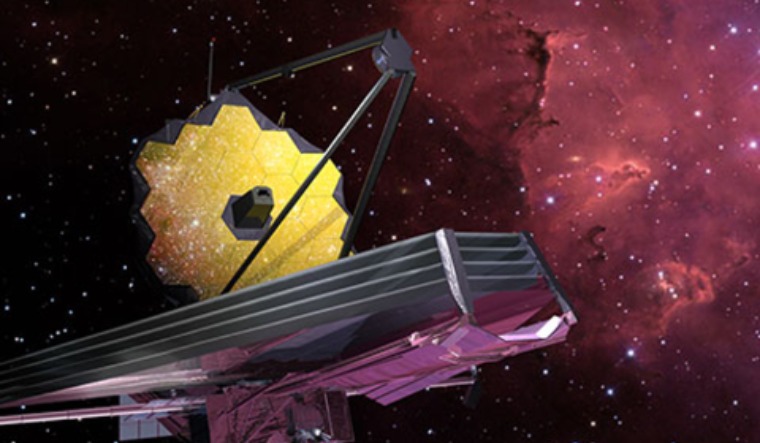In a galaxy over 12 billion light-years away, astronomers have detected complex organic molecules, or molecules having a carbon basis, using NASA's James Webb Space Telescope.
Webb's data found the distinct signature of these large organic molecules to be similar to those known on Earth to be in smoke, soot and smog, found in cancer-causing hydrocarbon emissions contributing to atmospheric pollution, the international team of scientists said in a study.
Justin Spilker, a Texas A&M University (US) astronomer, said that the implications of galactic smoke signals, referring to the carbon-based molecules, were much less disastrous for their cosmic ecosystems.
Describing them as being "pretty common in space", Spilker, an assistant professor in the Department of Physics and Astronomy said, "Astronomers used to think they were a good sign that new stars were forming. Anywhere you saw these molecules, baby stars were also right there blazing away."
The new results from Webb showed that this idea might not exactly ring true in the early universe, according to Spilker, casting doubt on the old proverb that where there's smoke, there's fire, at least in the context of galaxies.
"Thanks to the high-definition images from Webb, we found a lot of regions with smoke but no star formation, and others with new stars forming but no smoke," Spilker added.
Spilker said the discovery, published in the journal Nature, was made possible by the combined powers of "Webb, fate and gravitational lensing".
Lensing is found to happen when two galaxies are almost perfectly aligned from a point of view on Earth and when light from the background galaxy gets stretched and magnified into a ring-like shape by the foreground galaxy.
"By combining Webb's amazing capabilities with a natural 'cosmic magnifying glass', we were able to see even more detail than we otherwise could," said Spilker.
"That level of magnification is actually what made us interested in looking at this galaxy with Webb in the first place, because it really lets us see all the rich details of what makes up a galaxy in the early universe that we could never do otherwise," said Spilker.
The light from the organic molecules, 12 billion light years away, was found to have begun its journey when the universe was less than 1.5 billion years old, about 10 per cent of its current age.
The researchers said that the discovery, said to be Webb's first detection of complex molecules in the early universe, demonstrated the telescope's power in discerning the complex chemistry involved in the birth of new stars even in the earliest periods of the universe's history.
The far-off galaxy, where the molecules have been found, was first discovered by the National Science Foundation's South Pole Telescope in 2013 and has since been studied by many observatories, including the radio telescope ALMA and the Hubble Space Telescope.


